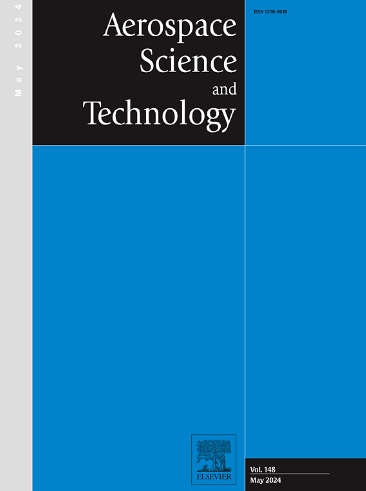Prediction of aerial refueling docking results by flying-wing UAV bow wave model established on CNN
IF 5
1区 工程技术
Q1 ENGINEERING, AEROSPACE
引用次数: 0
Abstract
Soft air refueling has become the most widely used unmanned autonomous refueling method for air forces in various countries due to its simple, reliable, and convenient advantages. The bow wave effect generated by the oil receiver is the main reason for docking failure. Establishing a bow wave model and accurately predicting the docking effect under its influence has become a key focus of research in this field. Traditional modeling methods have many problems, such as the semi-Rankine body model or vortex lattice method not being suitable for wing layout, and numerical simulation methods cannot cover a large number of flight conditions and are time-consuming. This study proposes a convolutional neural network (CNN) with transposed convolutional structures, which utilizes its ability to extract deep features from data to establish a flow field regression model from flight conditions to velocity distribution. And based on multi-rigid body dynamics, a finite element model was constructed to solve for the equilibrium position of the hose-drogue assembly (HDA). Subsequently, the Kriging interpolation method was used to train the drogue position offset model under different docking positions, thereby determining the range within which the oil receiver can successfully complete docking. This process uses flow field calculations obtained from CNN prediction and computational fluid dynamics (CFD) calculation respectively, and the results show that these two methods are very close, verifying the effectiveness of CNN method in constructing bow wave models and the feasibility of obtaining soft aerial refueling docking effects based on this model.
求助全文
约1分钟内获得全文
求助全文
来源期刊

Aerospace Science and Technology
工程技术-工程:宇航
CiteScore
10.30
自引率
28.60%
发文量
654
审稿时长
54 days
期刊介绍:
Aerospace Science and Technology publishes articles of outstanding scientific quality. Each article is reviewed by two referees. The journal welcomes papers from a wide range of countries. This journal publishes original papers, review articles and short communications related to all fields of aerospace research, fundamental and applied, potential applications of which are clearly related to:
• The design and the manufacture of aircraft, helicopters, missiles, launchers and satellites
• The control of their environment
• The study of various systems they are involved in, as supports or as targets.
Authors are invited to submit papers on new advances in the following topics to aerospace applications:
• Fluid dynamics
• Energetics and propulsion
• Materials and structures
• Flight mechanics
• Navigation, guidance and control
• Acoustics
• Optics
• Electromagnetism and radar
• Signal and image processing
• Information processing
• Data fusion
• Decision aid
• Human behaviour
• Robotics and intelligent systems
• Complex system engineering.
Etc.
 求助内容:
求助内容: 应助结果提醒方式:
应助结果提醒方式:


